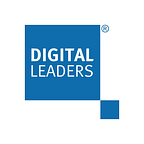8 tribes of digital and the rise of the robot army
Written by Catherine Howe, Director — Digital Transformation, DE Delivery Excellence at Capita plc
I developed the 7 tribes of digital model a couple of years ago — it was a response to my frustration about the number of conversations I was having about ‘digital’ which had people talking with different definitions and as a result very different framings of what digital can mean to an organisation. I felt, and still feel, that this fragmentation of definition often results in ‘capture’ of the digital agenda by a particular tribe and a lack of proper strategic integration. The frustration is still there — even as the term digital itself is becoming less and less useful as it is subsumed into mainstream strategic thinking driven by the need to respond to the disruption I discussed in my post on rowers, pirates and rocket ships.
This post is a tribal audit…..and a welcome to the new tribe: the robot army.
The use of language is deliberate — I call them tribes because they are cultural as well as practical constructs and because digital change, is more about cultural and organisational change with only a relatively small percentage simply being down to the technology. Technology is an enabler IF you embed it in your strategy as such — if you don’t then it will follow its own path — probably written for it by a young male hipster somewhere in silicon valley.
There are many qualities to tribes which make them a useful metaphor; Tribes share common ancestry, leadership and usually common values. Their links are practical — economic or structural — as well as social. Most of the digital tribes I describe have ancestry and connections to ‘traditional’ professions and this history is also important. Knitting these tribes together is one of the key challenges of a digital leader.
I use the 7 (now 8) tribes model because it helps organisations think about their digital strategy in a different way. The digital agenda is still as undefined and as open to capture as it was a few years ago and the model helps people navigate their own organisation and recognise the different digital agendas in play. I have however been updating it a bit to reflect changes over the last couple of years.
As I reviewed the tribes a couple of things stood out:
- The shift in the data tribe is perhaps most obvious with a marked split between big and open data with a smaller than previous intersection. Open access has in many ways become a tribe in its own right with open data as the vanguard. This is possibly a precursor to the fact that the fight needed to keep the internet free and open is now bubbling to the surface of public debate — not before time.
- The service design tribe continue to be on a roll and the cargo cult have shifted from a mantra of ‘build me an app’ to asking for sensors in everything….
But the newcomer is the automation tribe — the builder of the robot army. Its a broad tribe including artificial intelligence as well as the less complex robot process automation and its interesting not just because of its ability to take costs out or increase human productivity but also because of its ability to interface with legacy systems and significantly increase your speed of change. Over the last year we have seen the conversation shift from talking about large scale automation as theoretical to seeing it become part of mainstream digital thinking. Of all the tribes the automation tribe are most closely linked with the future of work and offers up some important dilemmas for organisations looking to shape their future workforce.
The tribes are clearly stereotypes and are meant fairly light heartedly — but I think they resonate with people because there is a truth to them. When I use them in sessions people can see the tribes in their own organisation and it helps leaders to see where their digital agenda has been captured or where the gaps are. Its always striking to ask leaders if they know their own tribe because it often flushes out the insecurity which many people have when talking about ‘digital’.
But the important thing about the 8 tribes is that none of them work on their own. Multidisciplinary thinking and working is at the centre of any kind of organisational change — and understanding that is a specific skill and not something which can be left to happen by chance. We need each of the 8 tribes and future tribes of digital if we are going to do something which is actually transformational with digital and networked technology — and recognising them is the first step to making that happen.
This article was originally published here but was reposted with permission.
Originally published at digileaders.com on December 15, 2017.
